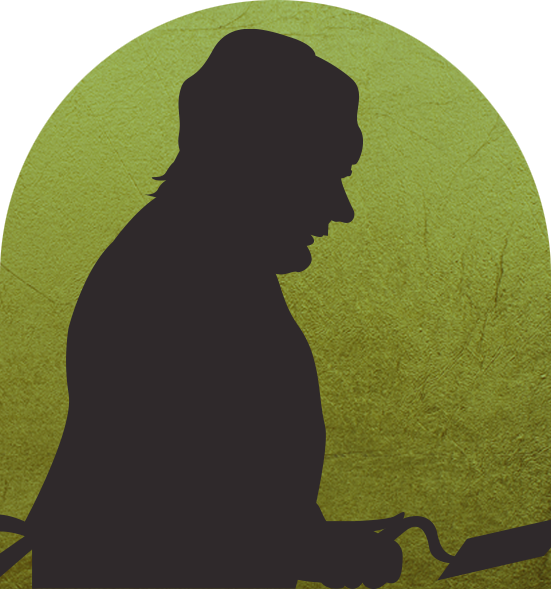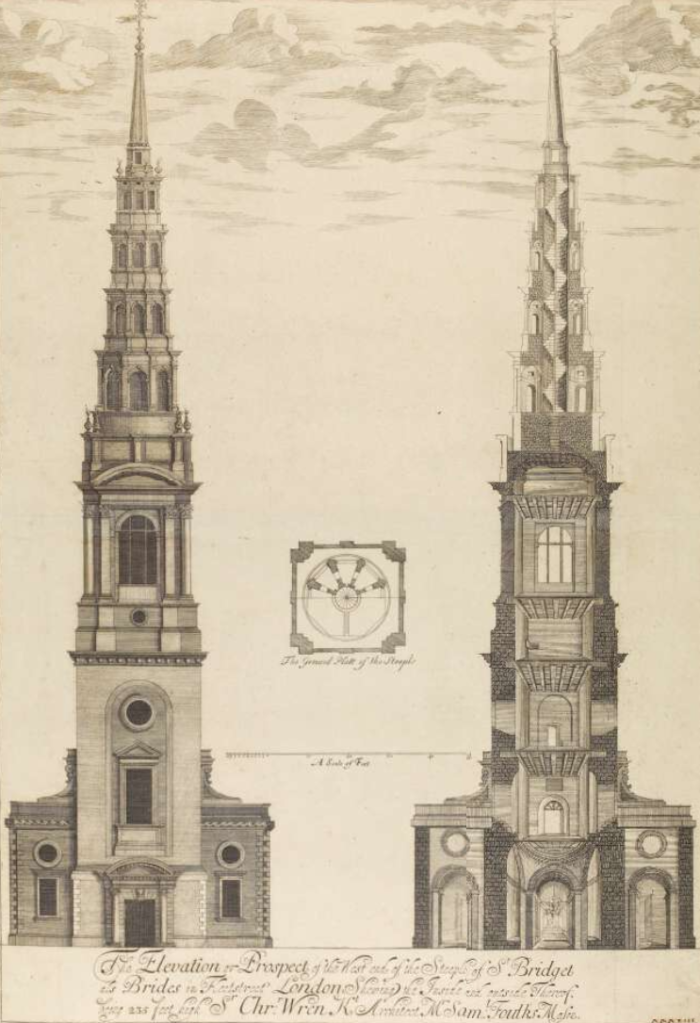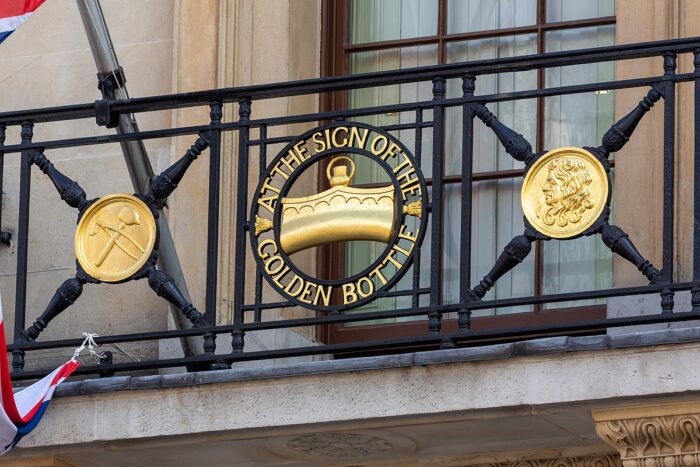St Bride
Read the stories of four that either survived or succumbed to the flames, and how they reemerged from the ruins.

St Bride
Samuel Fulkes had a long and recognised career as a mason, even though he was not a member of the Worshipful Company of Masons. Instead, he was granted Haberdasher freedom by redemption in 1671.
He and his wife Margaret had a daughter named Sarah who married Edward Stanton, a monument mason. Sarah and Edward had a child named William, who is listed in Samuel Fulkes’s testament, and he also mentioned other daughters: Anna, Martha (unmarried), Mary and Katherina. Samuel made additions to his first will and testament various times. He was a very wealthy man and according to his will and a poll book dated 1714, he had a freehold in Chelsea. He died on September 11, 1714, and was buried at St Dunstan in the West.

Architectural elevation of St Bride's church, Fleet Street; on the left the exterior of the building and on the right a cross section of the inside, in between a small ground plan of the steeple. 1680 © The Trustees of the British Museum
From 1688 until 1708 Samuel worked as a mason at St Paul’s Cathedral and in the meantime he worked at other City Churches. He worked on the reconstruction of St. Bride’s at various points, first on the church with Joshua Marshall from 1671 to 1678, and then on the spire from 1701 to 1703.
Secondary sources confirm that Samuel was paid 2s 6d per day on the Duke of York’s Lodging at Whitehall in October 1664, as one of his first contracts. He probably had a home in Fetter Lane, where he had three men working for him and in 1694 he had another 16 men working at St Paul’s.

Records suggest that from 1695 to 1711 Samuel had a bank account at C. Hoare and Co., in Fleet Street. During this period, he was paying in instalments received from different contracts and withdrawing money his workers’ weekly wages. Over 16 years Samuel paid in and withdrew a total of nearly £8,000.
The sums paid in were commonly £100 or £200, going as high as £1,000 on one occasion. The withdrawals were apparently all in cash and mostly sums of £10, £20, £25, £30 or £40, drawn two, three or four times a month. On 18 September Samuel withdrew £110 from Hoare’s Bank to close his account.
Read more about Building and Modern Banking following the Great Fire.
Read the stories of four that either survived or succumbed to the flames, and how they reemerged from the ruins.
Keep up to date with the latest news ...